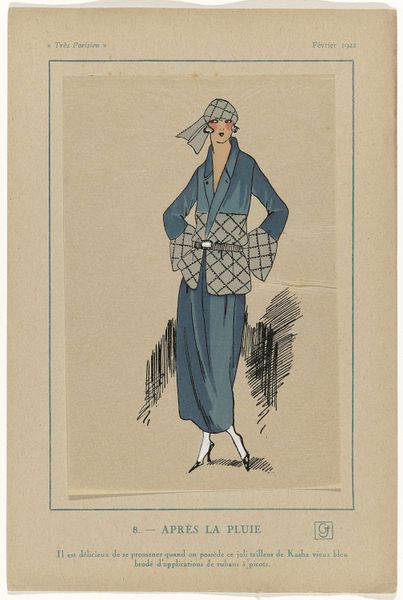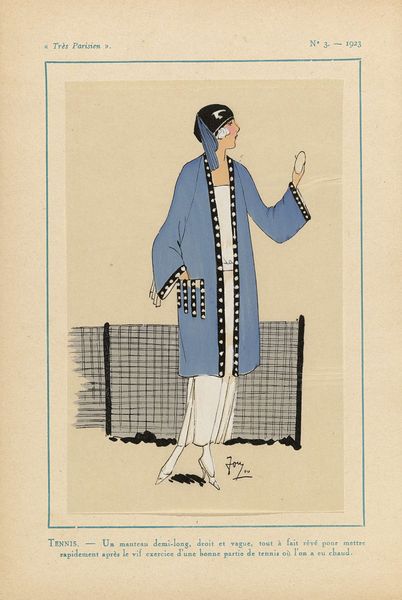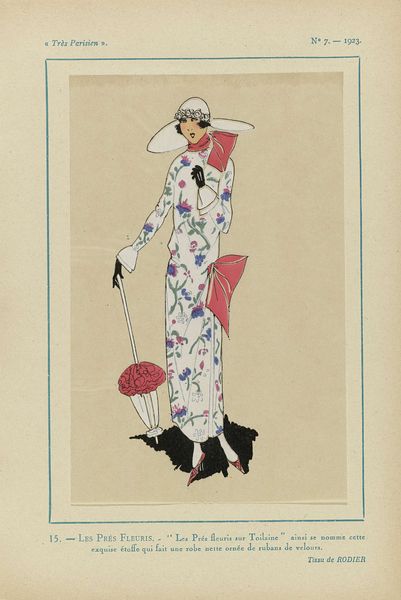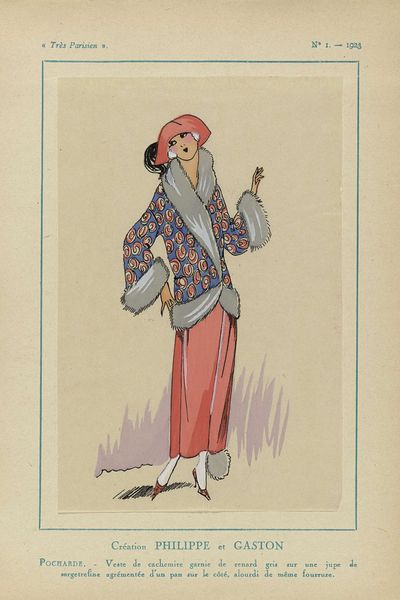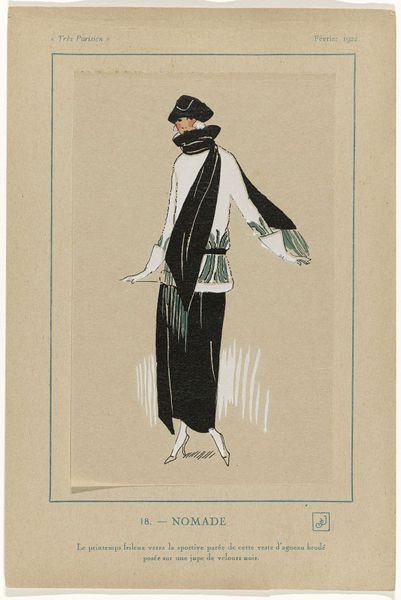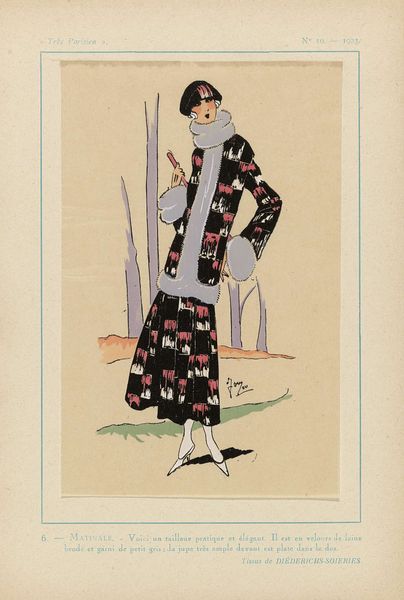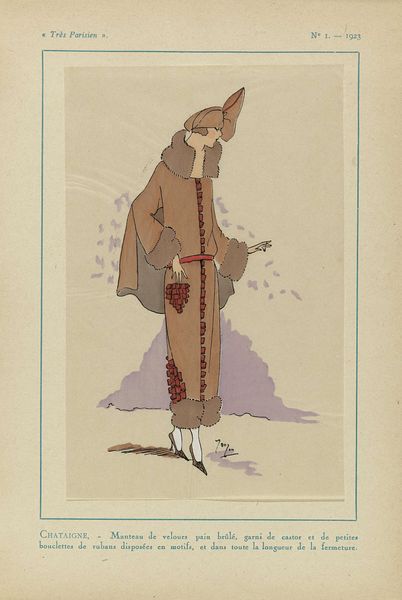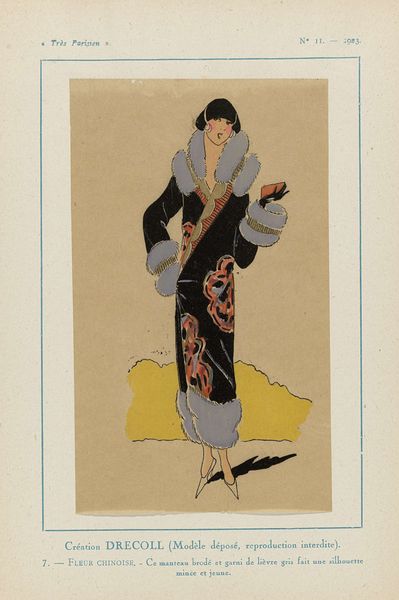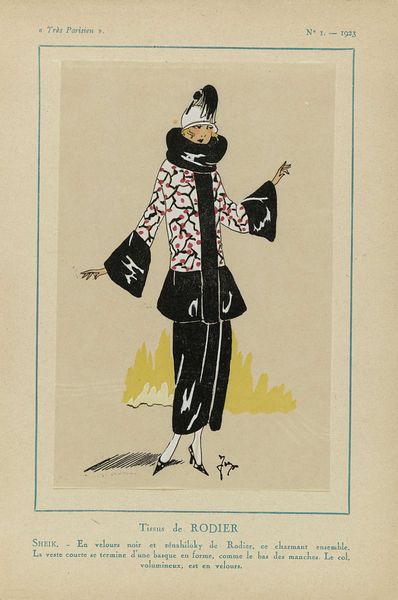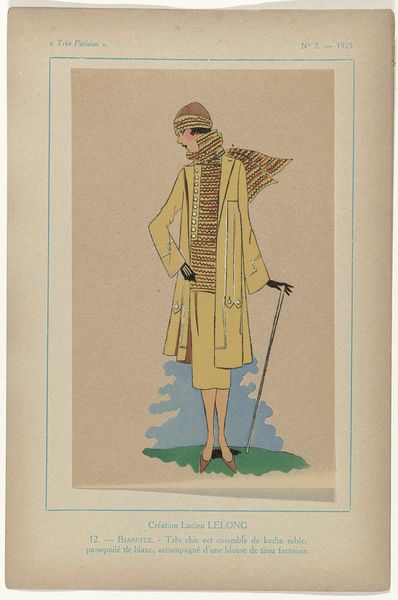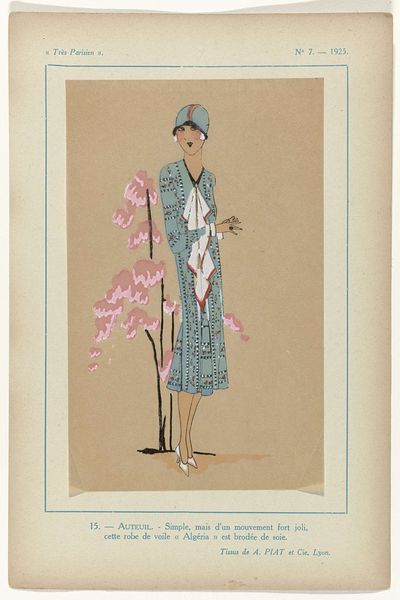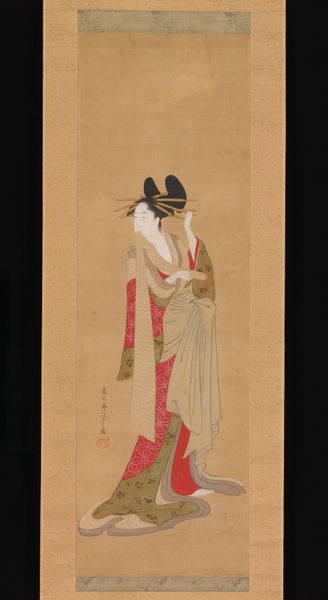
Très Parisien, 1923, No 8: 14.- POUR L'AUTO. - Original et de ligne... 1923
0:00
0:00
anonymous
Rijksmuseum
Dimensions: height 269 mm, width 180 mm
Copyright: Rijks Museum: Open Domain
Curator: This print, entitled "Très Parisien, 1923, No 8: 14.- POUR L'AUTO. - Original et de ligne...", dates to 1923 and is housed right here in the Rijksmuseum. It looks to be a drawing, or perhaps a printed illustration, indicative of Art Nouveau aesthetics. Editor: It’s strikingly elegant, if a little bit detached. The limited palette lends it a sense of refined distance, like glimpsing a fashionable figure in a dream. The pose, the angles, everything emphasizes this sense of cool removal. Curator: Precisely. Notice how the clean lines and somewhat muted tones construct an image of modern femininity. The woman is set against an abstracted, almost theatrical backdrop; her patterned robe subtly mirrors the organic yet stylized leaf-like designs that give her visual depth, an almost dreamlike field that suggests exotic locales without pinning down specificity. This mirrors the experience of driving - fleeting, glamorous, and leaving you wanting to see more. Editor: Absolutely. The textual element identifies the textile as "popeline brocart." This directs us toward questions of value: this isn't merely about aesthetics; it's tied to specific materials and a marketplace where fashion and industrial production intertwine, even if she looks strangely alone. Look at that heavy cloak next to the slim figure. I imagine this being expensive fabric, something imported from afar. Curator: I read her isolation differently. Instead of stark loneliness, her deliberate removal invokes ideals tied to early advertising imagery. Her attire symbolizes "le auto," her dress, meant to accompany this act, elevates driving a car, in Paris no less, to high cultural status and signals one's access to power, liberty, and a distinctly modern lifestyle. The stylized foliage reinforces this exotic vision—a promise that modern mobility could transcend and redefine our relationships to place. Editor: Yes, the robe appears almost like an "art object", further extending my line of thought about high art objects that function within an economy as tradeable things. To me it says more about production practices than exotic escapes. Curator: A tension between cultural aspirations and industrial outputs? Editor: Exactly. This print embodies that push-pull of its time. Curator: Thank you, that was very insightful! Editor: Always a pleasure to dive deep into materials!
Comments
No comments
Be the first to comment and join the conversation on the ultimate creative platform.
